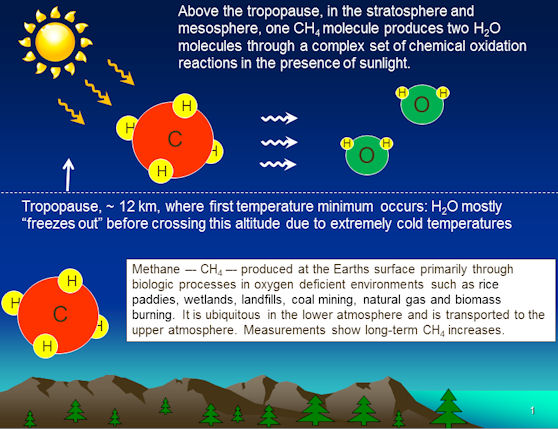Ghostly Night-Shining Clouds Get Their Glow from Meteor Smoke

Rare and mysterious clouds that are so bright they can be seen at night have mystified people since they were first observed more than a century ago, but scientists have now discovered a key cosmic ingredient for these night-shining clouds: "smoke" from meteors as they burn up in the Earth's atmosphere.
Blue-white clouds that eerily glow in the twilight sky are called noctilucent clouds, or NLCs. They typically form about 50 to 53 miles (80 and 85 kilometers) above ground in the atmosphere, at altitudes so high that they reflect light even after the sun has slipped below the horizon.
In a new study, scientists found that noctilucent clouds have an extraterrestrial link.
"We've detected bits of 'meteor smoke' imbedded in noctilucent clouds," James Russell, an atmospheric scientist at Hampton University in Hampton, Va., said in a statement. "This discovery supports the theory that meteor dust is the nucleating agent around which NLCs form."
Russell is the principal investigator of NASA's Aeronomy of Ice in the Mesosphere (AIM) mission, which is designed to study the clouds at the edge of space in Earth's polar regions. [Infographic: Earth's Atmosphere Top to Bottom]
"Using AIM's Solar Occultation for Ice Experiment (SOFIE), we found that about 3% of each ice crystal in a noctilucent cloud is meteoritic," study leader Mark Hervig, of the aerospace company GATS Inc., said in a statement.
Smoke from meteors
Breaking space news, the latest updates on rocket launches, skywatching events and more!
Our inner solar system is full of meteoroids ranging from huge chunks of rock to microscopic flecks of dust. As Earth travels along its orbit, the planet scoops up material. As meteoroids hit Earth's atmosphere and burn up, they leave behind a cloud of tiny particles that float about 43 to 62 miles (70 to 100 kilometers) above the ground.
The researchers say it is no coincidence that noctilucent clouds form within this region of meteor smoke. The dusty particles attach to water molecules that assemble into ice crystals in a process known as "nucleation."
Nucleation is common in Earth's lower atmosphere, where dust can act as similar gathering points for ice crystals, drops of water and snowflakes to grow around them.
Scientists are particularly interested in studying nucleating agents for noctilucent clouds, since they form at the edge of space where the air pressure is verging on vacuum-state. In these conditions, it's unusual for two water molecules to meet, let alone stick together.
But meteor smoke may provide the missing link, the scientists said. Based on AIM data, the researchers determined that ice crystals can grow around meteor dust to sizes of approximately 20 to 70 nanometers. To put this in perspective, cirrus clouds found in the lower atmosphere, where water is abundant, contain crystals that are 10 to 100 times larger, according to NASA officials.
These tiny ice crystals also explain how noctilucent clouds get their electric-blue color. Small particles typically scatter short wavelengths of light (blue) more than longer wavelengths (red). So from our perspective on the ground, when a beam of sunlight hits a noctilucent cloud, the scattered blue color is what we see.
It started with an eruption
Noctilucent clouds have been a mystery since they were first detected in the late 19th century. In 1885, about two years after the Indonesian volcano Krakatoa erupted, night sky observers around the world were treated to spectacular sunsets.
A German named T.W. Backhouse is often credited with discovering noctilucent clouds after he stayed out later one night as twilight gave way to dark. Backhouse noticed ghostly filaments glowing blue against the black sky. At the time, scientists assumed the strange effect was caused by the volcanic dust.
When Krakatoa's ashes settled, and the supercharged sunsets faded, the noctilucent clouds persisted, and can be seen to this day. Researchers are still unsure whether Krakatoa's ashes played a role in the early sightings of noctilucent clouds, NASA officials said.
Other mysteries of these night-shining clouds have scientists scratching their heads, including why noctilucent clouds are brightening and spreading.
In the 19th century, noctilucent clouds were seen only at high latitudes, but more recently, they have been spotted as far south as Colorado, Utah and Nebraska, NASA officials said.
According to Russell, the reason for this is climate change. Methane, which comes from landfills, natural gas and petroleum systems, agricultural activities and coal mining, has become more abundant in Earth's atmosphere since the 19th century. Methane has been found to increase the formation of noctilucent clouds.
"When methane makes its way into the upper atmosphere, it is oxidized by a complex series of reactions to form water vapor," Russell said. "This extra water vapor is then available to grow ice crystals for NLCs."
If so, noctilucent clouds could be an indicator for the presence of methane, one of the main greenhouse gases.
"Noctilucent clouds might look alien, but they're telling us something very important about our own planet," Russell said.
Follow SPACE.com on Twitter @Spacedotcom. We're also on Facebook and Google+.

Space.com is the premier source of space exploration, innovation and astronomy news, chronicling (and celebrating) humanity's ongoing expansion across the final frontier. Originally founded in 1999, Space.com is, and always has been, the passion of writers and editors who are space fans and also trained journalists. Our current news team consists of Editor-in-Chief Tariq Malik; Editor Hanneke Weitering, Senior Space Writer Mike Wall; Senior Writer Meghan Bartels; Senior Writer Chelsea Gohd, Senior Writer Tereza Pultarova and Staff Writer Alexander Cox, focusing on e-commerce. Senior Producer Steve Spaleta oversees our space videos, with Diana Whitcroft as our Social Media Editor.

